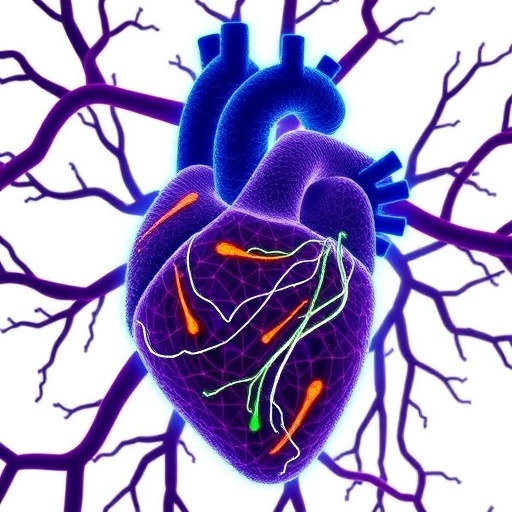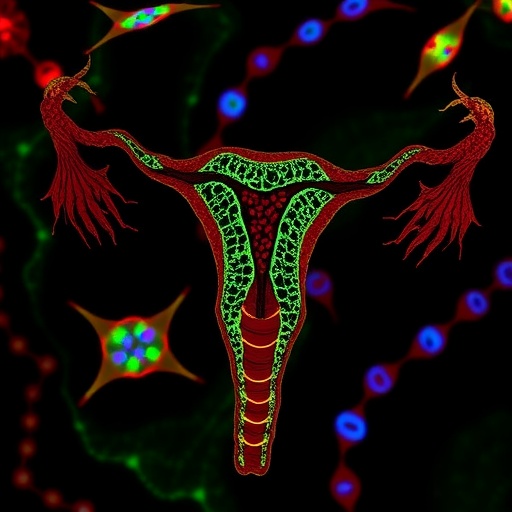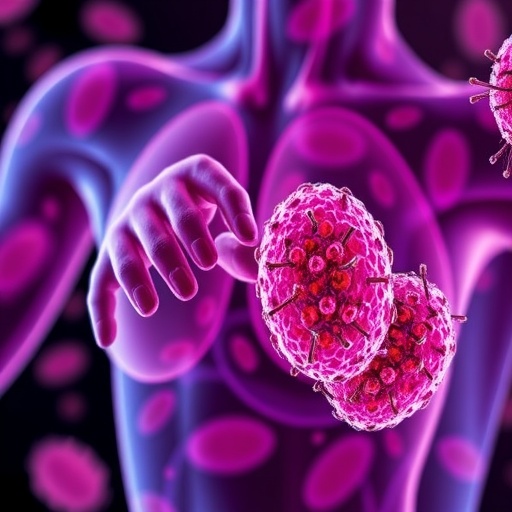Heart failure remains a formidable challenge in global health, representing a leading cause of mortality and morbidity worldwide. Traditionally, research has honed in on cardiomyocytes, the contractile muscle cells that sustain the heart’s pumping function, as the central culprits in heart failure pathogenesis. Yet, a groundbreaking study emerging from Japan is set to revolutionize this paradigm, drawing attention to an often-overlooked cellular player: cardiac fibroblasts. This revelation not only deepens our molecular understanding of heart failure but also illuminates a promising new horizon for therapeutic intervention.
In a recent publication in Nature Cardiovascular Research, Professor Shinsuke Yuasa and colleagues from Okayama University detail their discovery of a specialized cardiac fibroblast subset that actively exacerbates heart failure. Far from being passive structural supporters, these fibroblasts utilize a molecular signaling cascade—the MYC–CXCL1–CXCR2 axis—to undermine cardiac function. This finding disrupts the long-held dogma that attributes heart failure progression primarily to compromised cardiomyocytes, proposing instead that fibroblasts can serve as dynamic agents in disease evolution.
Analyzing both murine models and human cardiac tissue samples, the research team identified a distinct population of fibroblasts within failing hearts that express the oncogene Myc. These cells secrete CXCL1, a chemokine that binds to CXCR2 receptors on cardiomyocytes, triggering a detrimental feedback loop. The activation of this pathway compromises cardiomyocyte performance, attenuating the mechanical efficiency of the heart. Experimental interventions blocking this axis in animal models led to significant functional improvements, lending strong support to the therapeutic potential of targeting fibroblast-mediated signaling.
Professor Yuasa highlighted the paradigm shift this discovery entails: “Our investigations revealed that fibroblasts, once considered mere bystanders, are indeed central drivers of heart failure progression. By disrupting the communication between these support cells and muscle cells, we can uncover new approaches to restore cardiac function.” This insight redefines the cellular landscape of heart failure, underscoring the importance of intercellular signaling networks in cardiac pathology.
The molecular intricacies involve the upregulation of Myc, a transcription factor long associated with cellular proliferation and oncogenesis, in failing heart fibroblasts. Myc’s activation leads to enhanced secretion of CXCL1, which mobilizes inflammatory and reparative responses but, paradoxically, precipitates cardiomyocyte dysfunction through its receptor CXCR2. This receptor-mediated signaling cascade instigates cellular stress responses and metabolic dysregulation within cardiomyocytes, contributing to impaired contractility and adverse remodeling characteristic of heart failure.
Extending beyond animal models, the team validated their findings with human cardiac biopsy specimens. Samples from patients diagnosed with heart failure exhibited elevated levels of MYC and CXCL1 in their cardiac fibroblasts compared to healthy controls. This clinical correlation affirms the relevance of the MYC–CXCL1–CXCR2 axis in human disease and underscores its translational significance. It suggests that therapeutic strategies aimed at modulating this pathway could mitigate cardiac dysfunction in patients suffering from heart failure.
Current heart failure treatments predominantly manage symptoms and delay progression but fall short of addressing underlying cellular contributors, especially in advanced stages where transplantation is often the last resort. By targeting fibroblast signaling mechanisms, there arises a compelling opportunity to develop novel pharmacological agents that not only protect cardiomyocytes but also recalibrate the pathological intercellular communication within the heart. Such targeted therapies offer hope for reshaping disease trajectories and improving patient prognosis.
The discovery of a fibroblast-driven signaling axis also stimulates a reevaluation of the cardiac microenvironment’s complexity in disease. It highlights the multifaceted roles of non-myocyte cells, challenging researchers to adopt a more holistic view encompassing cellular interactions, molecular crosstalk, and tissue remodeling dynamics. This perspective amplifies the potential for integrating advanced molecular biology, genetics, and pharmacology to devise more effective heart failure interventions.
Importantly, this research dovetails with parallel advances in cardiovascular medicine, including stem cell therapy and artificial intelligence-guided regenerative approaches. The detailed mechanistic elucidation of the MYC–CXCL1–CXCR2 axis offers new molecular targets that could be integrated into multifactorial treatment paradigms. Such synergy could accelerate the development of precision medicine strategies tailored to the molecular and cellular underpinnings of individual heart failure cases.
Despite the promise, the researchers prudently acknowledge that clinical application demands further investigation. Essential next steps include the design of safe and efficacious inhibitors of the MYC–CXCL1–CXCR2 pathway suitable for human use, alongside rigorous clinical trials to ascertain their capacity to halt or reverse heart failure progression. There is also an impetus to explore this pathway’s role in varying heart failure etiologies and stages to optimize therapeutic timing and patient selection.
Professor Yuasa envisions a future where targeting cardiac fibroblasts becomes a cornerstone in heart failure management. “By expanding our therapeutic focus to include the support cells that orchestrate tissue remodeling and intercellular signaling,” he asserts, “we open avenues for interventions that could transform outcomes for millions of patients who currently face limited options.” This vision embodies a shift towards a more nuanced and inclusive understanding of cardiac biology and disease treatment.
In sum, the identification of the MYC–CXCL1–CXCR2 signaling axis as a critical driver of heart failure progression via fibroblast activity marks a pivotal advance in cardiovascular research. It challenges existing paradigms, enriches our molecular toolkit, and sets the stage for innovation in heart failure therapeutics. As research continues to evolve, this newfound knowledge holds the promise of alleviating one of the most pervasive and devastating ailments affecting the human heart.
Subject of Research: Animals, human cardiac tissue samples
Article Title: Heart failure-specific cardiac fibroblasts contribute to cardiac dysfunction via the MYC–CXCL1–CXCR2 axis
News Publication Date: 25-Sep-2025
Web References: https://doi.org/10.1038/s44161-025-00698-y
Image Credits: Laboratories Servier from Openverse
Keywords: Heart Failure, Cardiac Fibroblasts, MYC, CXCL1, CXCR2, Cardiomyocytes, Cardiology, Cardiovascular Disorders, Cell Signaling, Molecular Pathways, Regenerative Medicine, Therapeutic Targets
Tags: cardiac fibroblasts rolecardiac tissue analysiscardiomyocyte interaction with fibroblastsfibroblast signaling in heart diseasefibroblast subset in heart functionfibroblasts as therapeutic targetsheart failure progressionheart failure research breakthroughsinnovative heart failure therapiesmolecular mechanisms in heart failureMYC-CXCL1-CXCR2 axisOkayama University heart study





